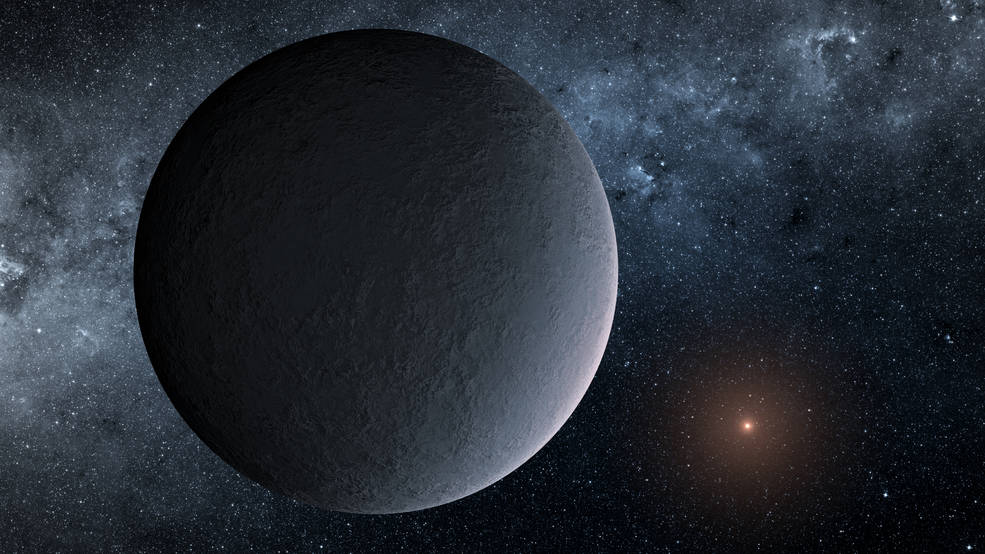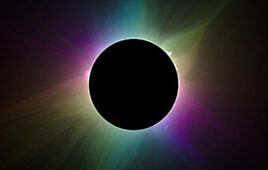
This artist’s concept shows OGLE-2016-BLG-1195Lb, a planet discovered through a technique called microlensing. Credits: NASA/JPL-Caltech
NASA scientists have found a new planet that may add to the understanding of the types of planetary systems that exist beyond the solar system.
The planet—OGLE-2016-BLG-1195lb—has roughly the same mass as Earth and is orbiting a star at the same distance that the Earth orbits the sun. However, because the star is so faint, NASA has concluded that the ‘iceball’ planet is likely too cold to be habitable for life.
“This ‘iceball’ planet is the lowest-mass planet ever found through microlensing,” Yossi Shvartzvald, a NASA postdoctoral fellow based at NASA’s Jet Propulsion Laboratory, Pasadena, California, and lead author of the study, said in a statement.
The scientists used microlensing—a technique that facilitates the discovery of distant objects by using background stars as flashlights where a star crosses precisely in front of a bright star in the background and the gravity of the foreground star focuses the light of the background star, making it appear brighter.
Also a planet orbiting the foreground object can cause an additional blip in the star’s brightness and for the ‘iceball’ planet—the blip lasted only a few hours but allowed NASA to view the distant exoplanet.
The discovery is expected to assist scientists in understanding the distribution of planets in our galaxy and answering whether there is a difference in the frequency of planets in the Milky Way’s central bulge compared to its disk.
The iceball planet, as well as two additional planets detected through microlensing by NASA’s Spitzer Space Telescope, are located in the disk.
“Although we only have a handful of planetary systems with well-determined distances that are this far outside our solar system, the lack of Spitzer detections in the bulge suggests that planets may be less common toward the center of our galaxy than in the disk,” Geoff Bryden, an astronomer at NASA’s Jet Propulsion Laboratory and co-author of the study, said in the statement.
The new exoplanet is about 13,000 light-years away and orbits a star significantly smaller than the sun. In fact, the star is so minuscule the scientists can’t say for sure that it is even a star as it is only 7.8 percent the mass of the Sun—placing it on the border of being classified a star and not being a star.
One theory is that the star is actually an ultra-cool dwarf star—similar to TRAPPIST-1—the host star to seven exoplanets discovered earlier this year.




